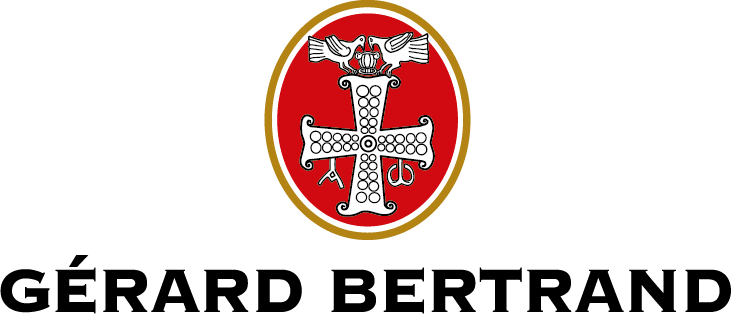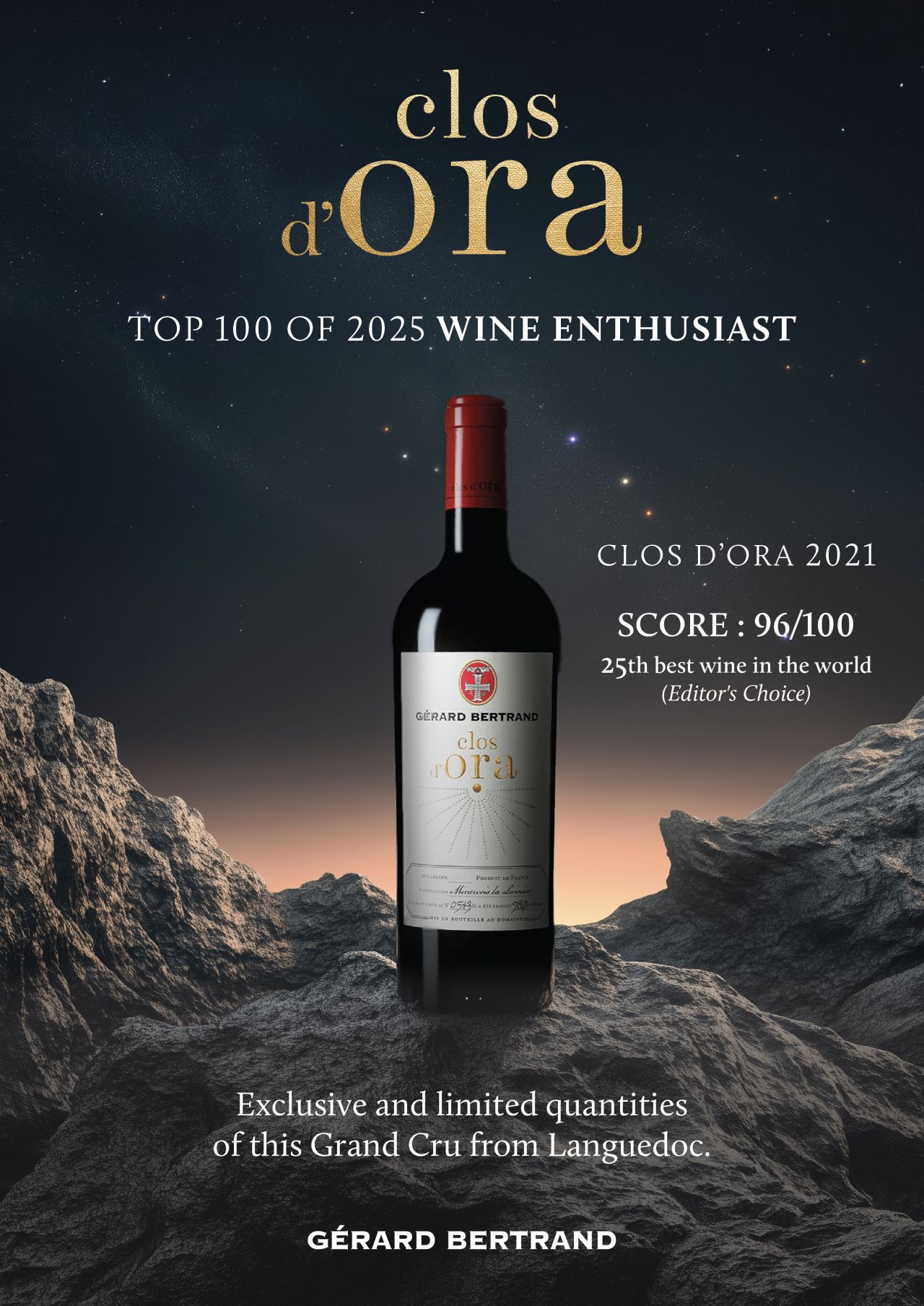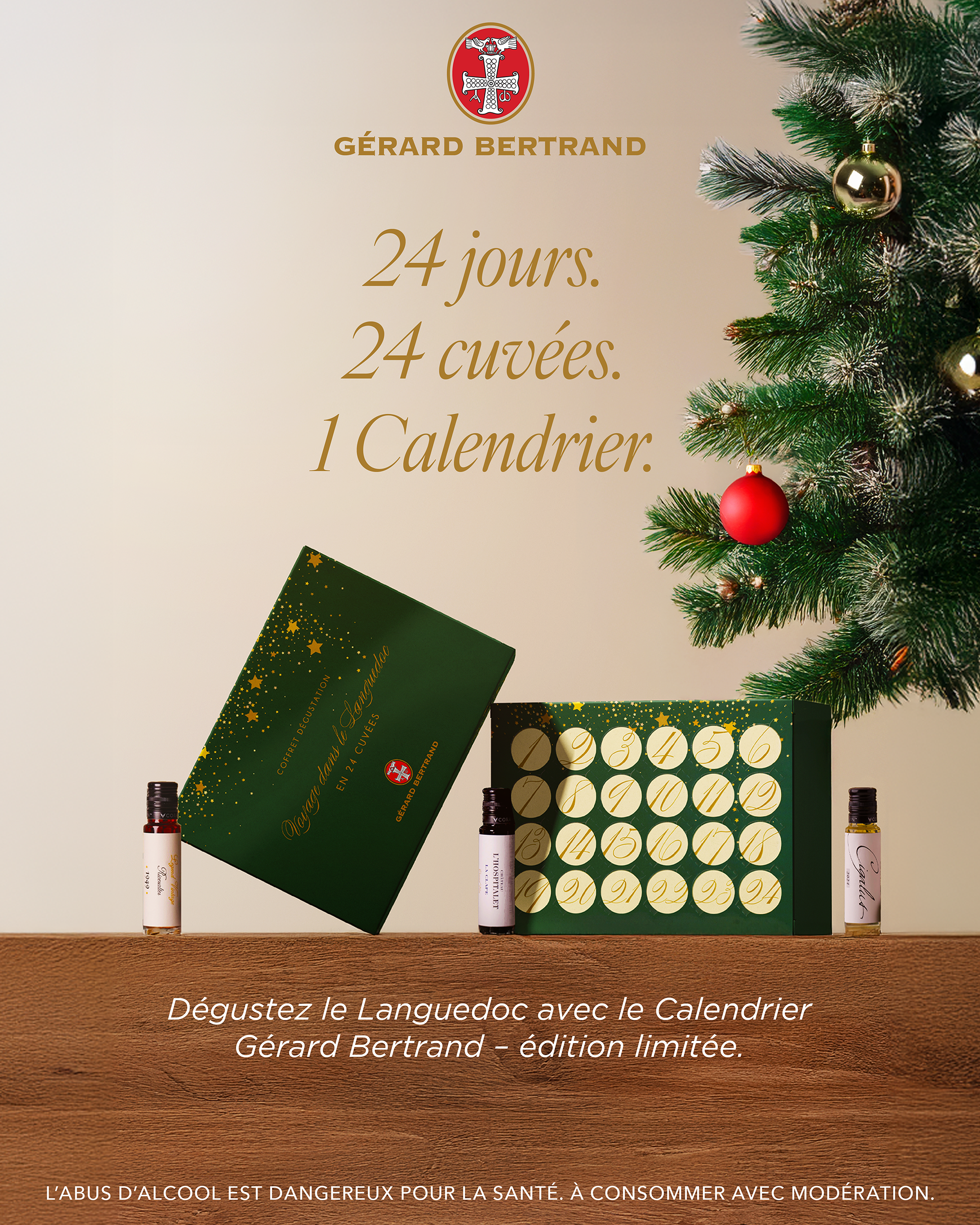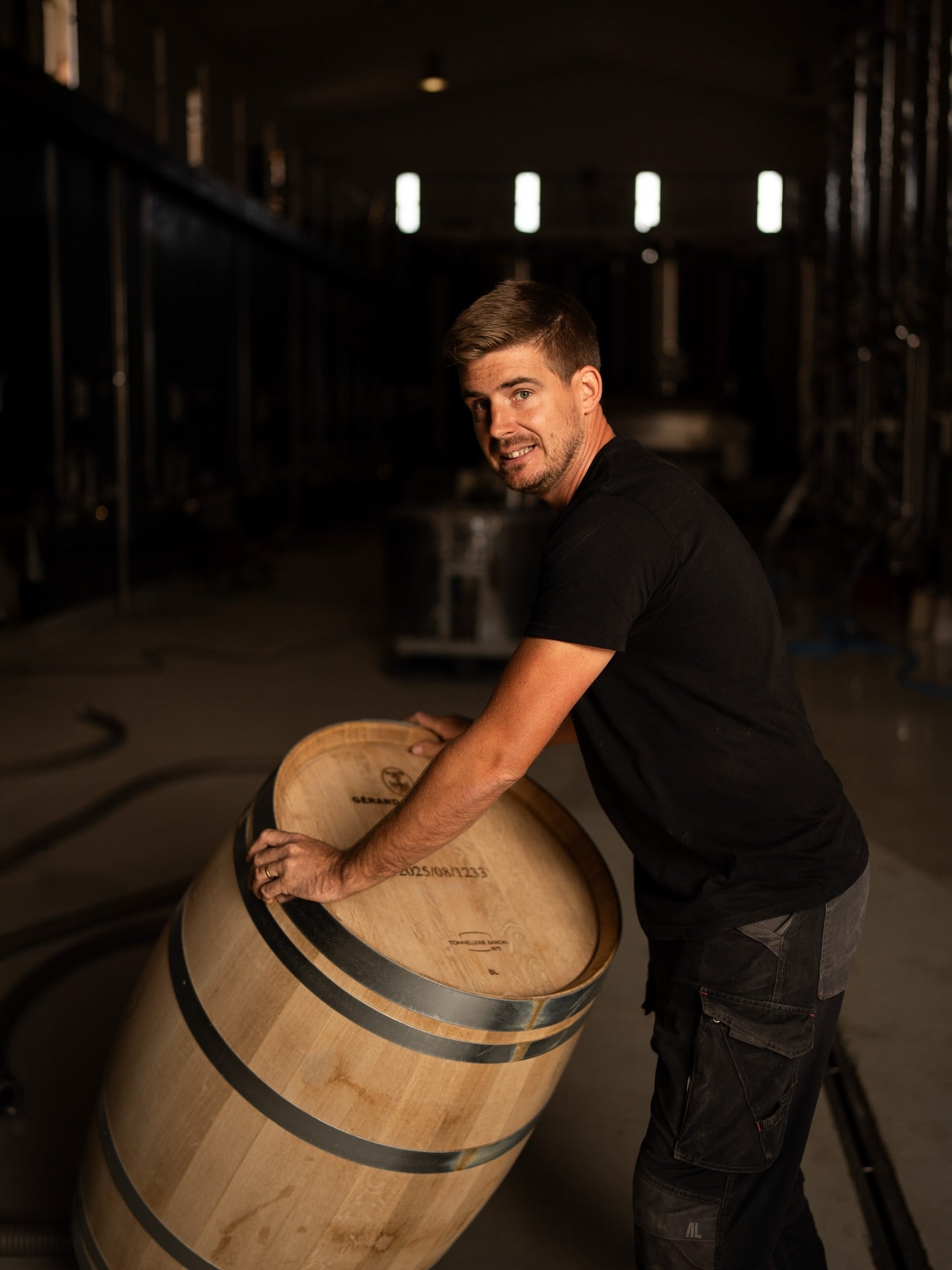Le vin idéal en 4 questions
FAITES LE QUIZZ



Ces vins iconiques sont des Grands Vins Rouges issus d’un terroir exceptionnel et conduits avec le plus grand soin. C’est-à-dire que contrairement aux autres vins, les Grands Vins Rouges sont différents. En effet, non seulement, la qualité organoleptique est aboutie, mais aussi, la méthode de production confère des différences au niveau de la culture et de la vinification. Même si pour faire du vin rouge, le procédé d’élaboration est commun à tous les types de vins. Pour élaborer des Grands Vins Rouges, il faut toujours revenir au cœur du vignoble. Puisque ce qui donne un Grand Vin Rouge ce sont les soins prodigués lors de la taille de précision sur chacun des vieux ceps de vigne. Afin d’avoir un rendement maîtrisé et une expression de terroir qui ne subissent aucune modification par des intrants œnologiques ou des process technologiques visant à corriger l’authenticité du vin.

Oui, revenir au cœur de l’essence même du vignoble pour élaborer des Grands Vins Rouges. Puisque c’est ici que tout se trame. En effet, planter un vignoble est une opération qui nécessite de porter un regard sur les générations futures. Cependant, les cépages choisis pour ce terroir de prédilection sont en cohérence avec la connaissance acquise des générations passées, ainsi que les résultats des analyses agronomiques et œnologiques.
Les Grands Vins Rouges : un travail de recherches intergénérationnelles
Tout se décide à la plantation. C’est une différence notable, entre cultiver une vigne pour un vin d’entrée de gamme sur un terroir à forts rendements et conduire une vigne pour un Grand Vin Rouge sur un terroir d’expression. En effet, le raisonnement n’est pas le même. Puisqu’une plantation d’un vignoble destiné à produire de Grands Vins Rouges s’engage pour 60, 70 voire 100 ans. Comme c’est le cas pour le vignoble familial de Gérard Bertrand du Château de Villemajou. Cette vision nécessite de s’entourer en amont et en aval. De celles et ceux qui ont l’expérience du lieu et de la compréhension des microclimats de cette zone géographique. Ainsi que des professionnels en agronomie et en œnologie qui eux sauront apporter des données précises selon les cépages, la typologie du sol et l’implantation de la vigne à pratiquer en fonction des écartements et de la surface foliaire souhaitée pour un Grand Vin Rouge.
La différence avec les vins standards se situe également au niveau d’une viticulture de précision sur des parcelles exceptionnelles. En effet, l’excellence qualitative est aussi obtenue grâce à l’exposition et au microclimat sur lesquels les vignes s’épanouissent. Cette viticulture pointilleuse ne sert pas qu’à développer le profil aromatique d’un cépage. Elle est magnifiée dans une communion entre l’expression de terroir et celle du cépage. Toutefois, un Grand Vin Rouge c’est aussi un vin qui avec toute son excellence s’identifie aussi à une appellation. Alors, les Grands Vins Rouges sont des vins uniques qui expriment chacune des nuances originelles des grands terroirs viticoles. La typicité du Domaine de Cigalus en est l’exemple, les cépages de Merlot, Cabernet-Franc et Cabernet-Sauvignon, Caladoc, Syrah, Mourvèdre et Carignan sont cultivés sur une mosaïque de terroir du pays de l'Aude entre Océan, Montagne et Mer.
Et aussi un respect total de la nature, avec des pratiques visant à préserver et à favoriser la biodiversité présente sur le domaine viticole en fonction du berceau géographique.
Ce qui distingue les Grands Vins Rouges des autres vins c’est aussi la maturité phénolique. Et chaque millésime n’est pas forcément propice à une maturation aboutie de la baie de raisin dans tout son capital. La maturité technique définit essentiellement le degré potentiel et l'acidité. Elle est évaluée par les analyses, mais elle est insuffisante pour déterminer la maturité des Grands Vins Rouges. Alors, l’observation de la maturité physiologique est plus intéressante. Puisqu’elle vise à détecter l’évolution du comportement végétatif de la vigne. Dans ce cas, il se démontre la capacité qu’à la vigne d'extraire de ses réserves une expression particulière. Le Graal pour les Grands Vins Rouges c’est d’atteindre la maturité phénolique. Cette maturité des pellicules et des pépins promet des vins haut de gamme.
Suite à ce travail de recherche intergénérationnel. Le bon sens paysan guide le savoir-faire au quotidien des pratiques culturales qui s’harmonisent tout au long de l’année sur le cycle végétatif de la vigne. Selon son déroulement et les conditions climatiques, le vignoble est accompagné de la main de l’homme pour protéger sa capacité à produire la quintessence des composés de son sol et des typicités de ses cépages. Ainsi, le travail des terres se fait dans la plus grande délicatesse. L’entretien de l'enherbement se maîtrise à la perfection afin que la vigne puisse s’épanouir. Surtout au moment de sa floraison, si la pluie et l’humidité sont trop présentes alors le capuchon floral ne se détache pas facilement et contribue au développement de maladies. D'où la chance, en Languedoc dans cette phase de bénéficier de la présence du vent.
La patience et les gestes de précisions subliment l’élégance naturelle obtenue de ces vins rouges au caractère unique. Une fois la vendange récoltée manuellement, elle arrive au cuvier. Dans ces conditions, les fermentations sont suivies de très près afin qu’elles tiennent toutes leurs promesses. Ces dernières décennies, de nombreuses techniques comme la thermovinification permettent d’élaborer des vins standardisés issus de raisins pouvant manquer de maturité et de qualité. À l'opposé, les Grands Vins Rouges sont obtenus par des méthodes de vinifications traditionnelles soutenues avec une maîtrise œnologique afin de faire durer l’expression aromatique d’un vin au travers sa garde. C’est pourquoi la maturité des anthocyanes c'est-à-dire les composés polyphénoliques du raisin a une influence positive sur tout le déroulement de la vinification du vin rouge, permettant au maître de chai d'obtenir un vin de qualité supérieure. De la sorte, le vin développe durant sa période d’élevage ses lettres de noblesse.
Il est indéniable que chaque Grands Vins Rouges de par sa complexité aromatique doit être servi à SA bonne température. Ces vins rouges sont des vins d’excellences et pour les apprécier pleinement, il est important de connaître quelques règles. C'est pourquoi s’informer auprès des sommeliers sur les conditions de températures de service du vin garantit une très belle expérience gustative. De plus, déguster un vin est un art de vivre de la gastronomie française qui se distingue par son raffinement.
Les Grands Vins Rouges sont issus d’hommes et de femmes passionnés par le souci du détail exerçant des gestes minutieux empreints d’une culture. Par conséquent, la dégustation d’un flacon demande de l’attention. Bien recevoir ses convives en servant le vin dans des verres à pied et accorder les mets et les vins sont autant de priorités pour honorer ce vin. Mais la puissance aromatique des meilleurs vins rouges dessine bien souvent des vins opulents et tanniques en bouche. Alors attention, au froid qui rétracte les arômes et serre les tanins engendrant un palais loin des attentes escomptées. Pour bien faire, les Grands Vins Rouges ne doivent pas être servis à une température inférieure à 14 degrés C.
Tout comme pour les Grands Vins Rouges, la provenance et les conditions de production des mets impactent non seulement la qualité des produits, mais aussi leurs saveurs. C’est pourquoi, il est vivement conseillé l'association des produits d'un même terroir. Comme c’est le cas pour les Grands Vins Rouges des Corbières sur un Cassoulet. Un accord de terroir met et vin authentique avec le Grand Vin Rouge d’assemblage du Château L’Hospitalet à la lumineuse robe, aux notes de poivre noir et aux tanins mûrs pour ce grand moment de partage sur une belle table. Ainsi qu’un vin exceptionnel comme La Forge, cette parcelle préférée de Georges Bertrand se marie somptueusement sur une viande maturée. Son caractère à la viscosité importante dévoile un bouquet complexe offrant un enchantement en bouche qui rappelle les balades en Corbières.
Liste des Grands Vins Rouges :
Château L'Hospitalet : ce Grand Vin Rouge millésime 2020 se boit dès à présent tout en ayant un avenir très prometteur.
Château des Karantes : ce Grand Vin Rouge millésime 2019 se sert à 17 °C.
Château La Sauvageonne : millésime 2020 à déguster dès maintenant ou à garder quelques années.
Ou encore, découvrez toute la collection de nos vins rosés.
Partir à la découverte des domaines Gérard Bertrand :
Ses châteaux viticoles du Languedoc-Roussillon
Son savoir-faire dans la conception de vins biodynamiques

Nous sommes fiers d’annoncer que Clos d’Ora 2021 figure 25e dans le top 100 des meilleurs vins au monde selon le Wine Enthusiast, avec une note exceptionnelle de 96/100.Véritable ambassadeur des gr...
Read more
La première édition de notre Calendrier de l’Avent est disponible en précommande.Un coffret en 24 étapes pour découvrir les plus belles expressions du Languedoc : vins iconiques, millésimes rares, ...
Read more
Sur les terrasses du Larzac, Nathan Cotes, Chef de culture au Château La Sauvageonne, façonne chaque jour l’âme de nos vins. Il évalue l’état et la qualité de la vigne et des raisins tout au lon...
Read more